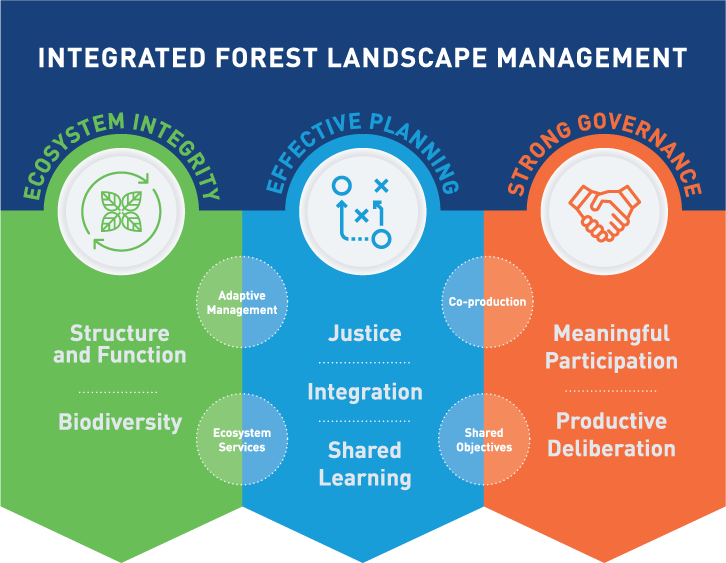The sustainable management of forests is increasingly focused at a landscape level. Integrated landscape approaches to forest management are more holisitic that conventional sector-based approaches.They recognise the multiple land uses and stakeholders that use and affect forest landscapes. However, there is limited agreement on what an integrated landscape approach looks like, and how to develop and evaluate these approaches.
This paper synthesises existing principles for landscape approaches to identify three key pillars that underpin integrated landscape approaches:
- Ecosystem Integrity
- Effective Planning
- Strong Governance
These three pillars can guide development and evaluation of forest management and provide a framework for Integrity-based Forest Management (INFORM).
Ecosystem integrity, effective planning and strong governance are three key pillars for integrated landscape approaches to forest protection and management
Ecosystem integrity defines the landscape and the benefits it provides. It depends on the ecosystem structure and function and the biodiversity of the landscape. Maintaining restoring ecosystem integrity is essential for sustaining the multiple, high quality ecosystem service benefits of primary forest landscapes. Ecosystem integrity provides the 'why?' of integrated landscape management.
Effective planning is essential to guide choices of land uses and activities to respond to current and future drivers of change. Effective planning processes are underpinned by shared learning, holistic integration and situated justice. Effective planning defines the 'what?' in integrated landscape management: what is important, what needs to be done.
Strong governance creates high integrity and legitimate decision-making about the forest and its landscape. Strong governance requires meaningful participation and productive deliberation. Strong governance is the 'how?' of integrated landscape management.
Article authors
Ed Morgan
Tim Cadman
Brendan Mackey
Reference
Morgan, E. A., Cadman, T., & Mackey, B. (2020). Integrating forest management across the landscape: A three pillar framework. Journal of Environmental Planning and Management, 64(10), 1735–1769. https://doi.org/10.1080/09640568.2020.1837747
Request a copy of the article
If the download article link below doesn’t work, or leads to a page that requests payment, please click the link to the author profile above and request a copy directly and they will be happy to assist. Not all reviewed journal articles are published as ‘open access’, which are free to download.




